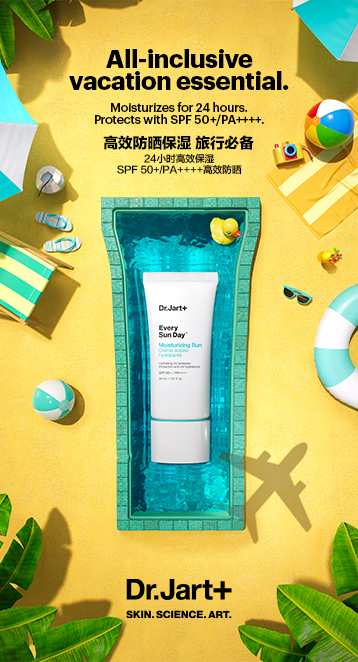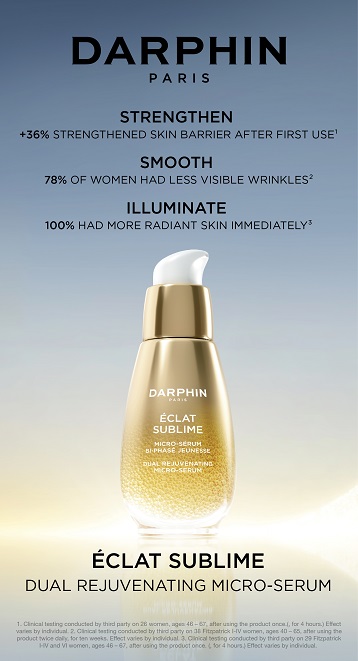
The Estée Lauder Companies generated a strong increase of 11%* in net sales to US$3.74 billion in its third financial quarter (ending 31 March 2019) versus the same period in 2018, with nearly all product categories and channels showing growth.
For the nine months ending 31 March, ELC reported net sales of US$11.27 billion, a 9% increase compared with the prior-year period.
Travel retail was cited as among the biggest growth drivers in Q3 – particularly in the EMEA region (see below) – continuing the strong trajectory for the channel seen in prior periods.
ELC President and Chief Executive Officer Fabrizio Freda said: “We had anticipated a gradual moderation of growth in China and travel retail starting in the quarter, which didn’t happen, and that contributed to our over-achievement. We continue to see strength in several of our key engines of growth and, as a result, we are again raising our net sales and EPS (earnings per share) guidance for the year.”
On the results as a whole Freda was delighted: “We delivered terrific performance in our fiscal third quarter, driven by strategic investments in our best opportunities, combined with creativity and data-driven insights that fuelled exciting innovations.
“These drivers strengthened loyalty to our brands and hero franchises and attracted new consumers globally. Our strongest growth engines were the Asia Pacific region, the skincare category, our Estée Lauder, La Mer and Tom Ford Beauty brands, and travel retail and global online channels.”

He said that ELC’s double-digit constant currency sales growth was ahead of the company’s long-term goal and claimed that ELC “continued gaining share in global prestige beauty”.
Freda added: “With savings from our Leading Beauty Forward initiative, we reallocated resources into targeted advertising, while still growing profit faster than net sales gains. Long term, we are uniquely positioned. Favourable demographic trends make prestige beauty a desirable, growing industry, and as the best diversified pure play, we are confident in our ability to gain global share.”
Performance by region

The Americas – On a reported basis, net sales decreased 2% to US$1,155 million.
The result reflected prestige beauty retail sales further decelerating in the US during the quarter, particularly make-up. ELC said: “Despite challenges in brick-and-mortar stores, net sales online continued to grow across brand.com and retailer.com and we continued to change our mix to faster-growing channels.” Sales in key countries in Latin America grew (in constant currency) including Brazil and Mexico. This was offset by declines in Chile and Venezuela.
Europe, Middle East & Africa – On a reported basis, net sales increased 15% to US$1,625 million.
Strength in the region was primarily due to double-digit growth from travel retail. ELC said: “More than half of our top 10 brands in the channel grew in double-digit, led by Tom Ford Beauty, Estée Lauder, Origins, MAC, and La Mer. Growth was also realised across many geographies and reflected increases in international passenger traffic, improved conversion, successful innovation and expanded targeted consumer reach.”

In constant currency, net sales grew in India (primarily driven by MAC), Russia (helped by Estée Lauder and La Mer) and Italy. This was partially offset by lower sales in certain Western European markets and slightly lower sales also in the UK. The UK performance “reflected reduced consumer confidence ahead of Brexit and lower traffic across brick-and-mortar stores… partially offset by higher online net sales”.
ELC added: “Emerging markets in the region were negatively impacted by foreign currency translation. Excluding this impact, the net sales in a majority of those markets reflected strong growth.”
Asia Pacific – On a reported basis, net sales increased sharply by 25% to US$966 million.
The region is now worth almost US$1 billion, with two-thirds of markets growing in double digits. Hong Kong, Japan and emerging markets in Southeast Asia continued to deliver strong growth, and sales in China and Korea accelerated. ELC generated double-digit sales growth in virtually every major product category and channel.
Performance by category

Skincare – On a reported basis, net sales increased 21% to US$1,744 million.
The category grew across most geographies, led by Estée Lauder and La Mer. Clinique’s skincare net sales also grew globally in constant currency. The Estée Lauder brand delivered double-digit growth in most regions and channels reflecting strength in franchises such as Advanced Night Repair, Nutritious, Perfectionist, Micro Essence and Revitalizing Supreme.
The growth also reflected innovations such as Advanced Night Repair Eye Supercharged Complex and the launch of Micro Essence Skin Activating Treatment Lotion Fresh with Sakura Ferment in Japan.
Double-digit growth from La Mer was also broad-based, with net sales increasing across most regions and channels, driven by higher net sales of existing products, including The Concentrate and The Treatment Lotion, as well as increases in the eye sub-category.
 Make–up – On a reported basis, net sales increased 5% to US$1,461 million.
Make–up – On a reported basis, net sales increased 5% to US$1,461 million.
Growth in make-up was helped by higher sales from Tom Ford Beauty, Estée Lauder, La Mer and MAC. This was partially offset by lower sales from Clinique and Smashbox. Tom Ford Beauty increased by double digits, fuelled by lip colour and eye shadow franchises.
Estée Lauder’s strong growth was driven by the Double Wear franchise, Futurist Aqua Brilliance foundation and the Pure Color line of products which benefited from the launch of Pure Color Desire. La Mer’s strong double-digit increase was supported by the launch of The Luminous Lifting Cushion Foundation as well as expanded consumer reach. Meanwhile, MAC’s rise was led by double-digit growth across Asia Pacific (including the successful Strike of Kings collection in China), the Middle East, and India.
Fragrance – On a reported basis, net sales increased 3% to US$392 million.
The increase reflected growth from Estée Lauder as well as from luxury fragrances including Jo Malone London, Tom Ford Beauty, Le Labo, and By Kilian, in large part thanks to expanded targeted consumer reach. These were offset by lower sales from some of ELC’s designer fragrances that were not identified. Increased sales from Tom Ford Beauty also reflected strong growth from Private Blend lines Oud Wood and Soleil Blanc, while Le Labo and By Kilian saw new product launches.
Haircare – On a reported basis, net sales decreased 3% to US$136 million.
The decline primarily reflected lower sales from Bumble and bumble, primarily in the North America salon channel.
Outlook for full-year fiscal 2019
ELC said it continues to see strong consumer demand for high-quality products and for the fiscal year “expects to grow significantly ahead of the industry and to continue building global share”. Global prestige beauty is expected to grow approximately 7% during the period.
However, the company warned that risks related to social and political issues could affect consumer spending in certain countries and travel corridors. In particular, it highlighted “continued softness of brick & mortar retail in the US and UK (especially in make-up); costs associated with the anticipated Brexit in the UK; continuation of tariffs in China; and the eventual moderation of net sales growth in China and travel retail.
*ELC said that excluding the negative impact of currency translation (US$146 million, or 4%) and the benefit of adopting the new revenue recognition accounting standard ASC 606 (US$106 million, or 3%), net sales increased 12%.
For the full Q3 financial breakdown, see table below.









